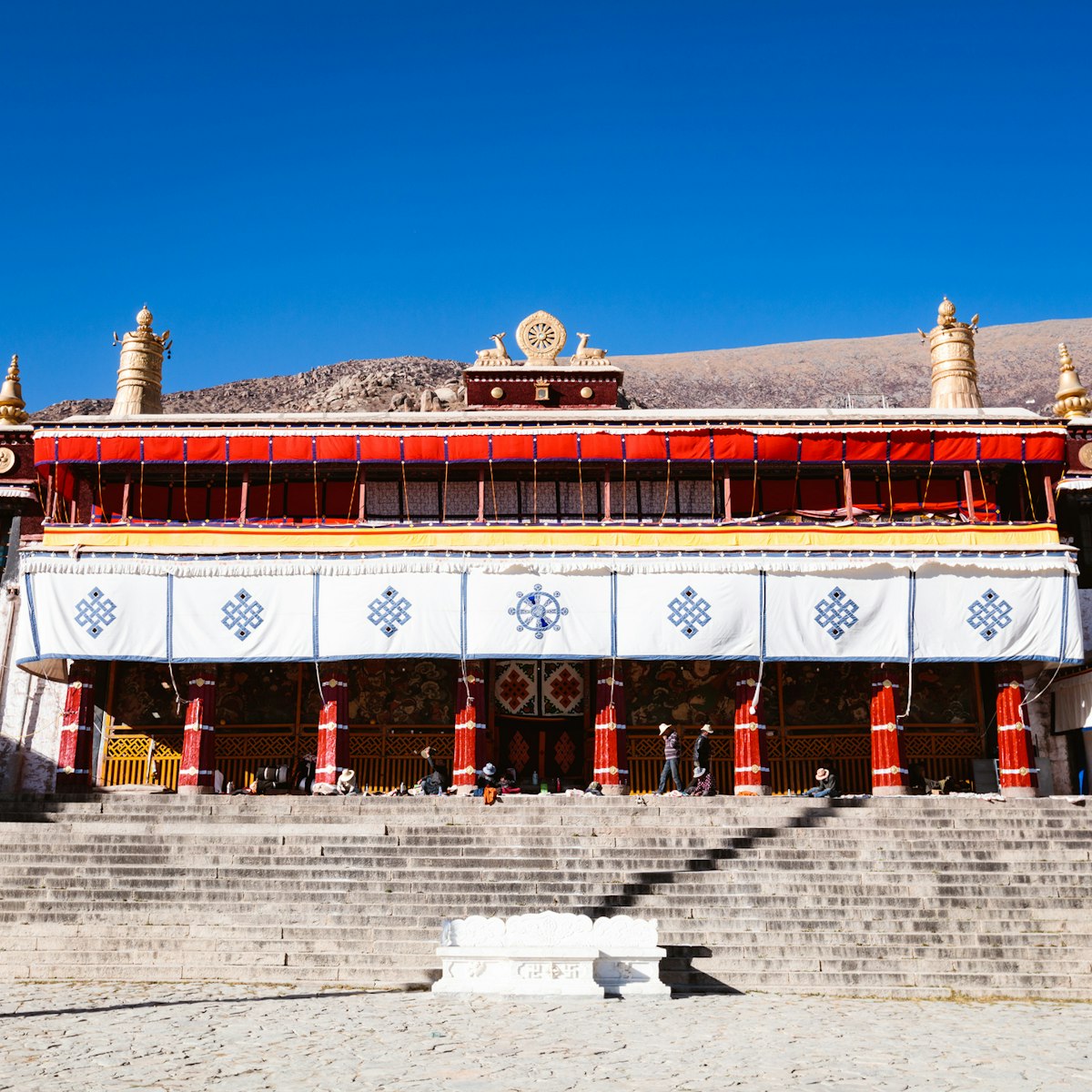The New Summer Palace in the centre of the Norbulingka's park was built by the present Dalai Lama between 1954 and 1956 and is the most interesting of the Norbulingka palaces. You can only enter the walled complex from its eastern side.
The first of the rooms is the Dalai Lama’s audience chamber. Note the wall murals, which depict the history of Tibet in 301 scenes that flow in rows from left to right. As you stand with your back to the window, the murals start on the left wall with Sakyamuni and show the mythical beginnings of the Tibetan people (from the union of a bodhisattva and a monkey in the Sheldrak Cave), as well as the first field in Tibet (representing the introduction of agriculture). The wall in front of you depicts the building of the circular monastery of Samye, as well as Ganden, Drepung and other monasteries to the right. The right wall depicts the construction of the Potala and Norbulingka.
Next come the Dalai Lama’s private quarters, which consist of a meditation chamber and a bedroom. The rooms have been maintained almost exactly as they were when the Dalai Lama left them, and apart from the usual Buddhist images they contain the occasional surprise (a Soviet radio, among other things).
The assembly hall, where the Dalai Lama would address heads of state, is home to an extraordinarily ornate gold throne backed by wonderful cartoon-style murals of the Dalai Lama’s court (left, at the back). Look out for British representative Hugh Richardson in a trilby hat, and several Mongolian ambassadors. The right wall depicts the Dalai Lamas. The first five lack the Wheel of Law, symbolising their lack of governmental authority. Last are the suites of the Dalai Lama’s mother (other sources state they are meeting rooms), whose bathroom sink overflows with offerings of one-máo notes.



